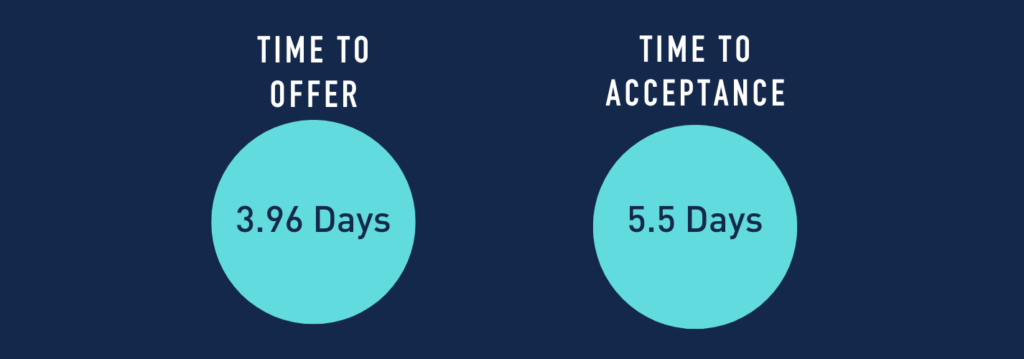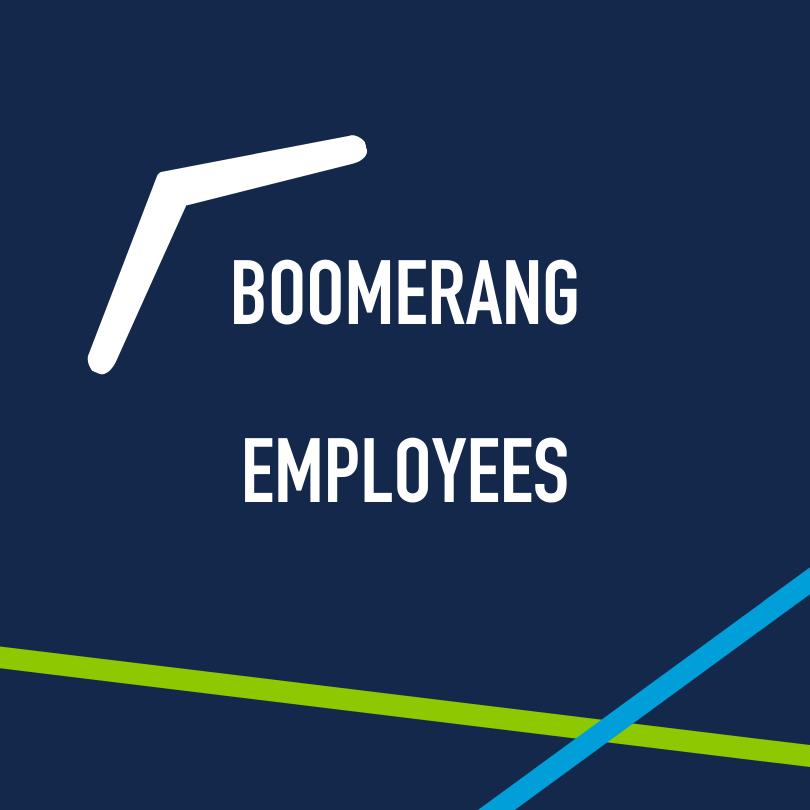High-volume recruitment involves sourcing, screening, interviewing, and hiring large numbers of applicants for similar openings or job types to meet a surge in demand. It requires a tricky balance of keeping substantial quantities of applicants moving through the recruitment process at speed. And, throughout the year it requires talent acquisition teams to scale up quickly to meet seasonal demand. Talent is off the market within 10 days according to OfficeVibe, yet the average time to hire in Australia has increased from 33.4 days to 40 days, meaning the best talent is off the market long before traditional, manual processes can be completed. A complete rethink in how companies hire is needed to be competitive,
Competition talent is steep, with high demand from contact centres, hospitality, retail, security, travel, logistics, healthcare and even government entities in what now is a highly unpredictable environment. In fact, according to Aptitude Research, 65% of companies have high-volume recruitment needs. Plus, with today’s higher attrition rates, it can feel like an impossible mission.
A technology-first approach to high-volume hiring can help you hire at volume, speed and scale without sacrificing the candidate experience or quality of hire. More importantly technology enables your available roles to be accessible to candidate anytime/anywhere via 24/7 automated hiring. Here are three ways Talent Acquisition technology can help you with high-volume recruitment.
1. Boost the Candidate Experience
Pressure to fill high-volume positions quickly often means that the candidate experience suffers. A poor experience can result in high drop-off rates, with 80% of candidates ducking out during the application phase. At that rate how are you supposed to succeed at high-volume hiring?
Modern candidates expect a hiring experience to be personal, quick and convenient. A whopping 89% of candidates think mobile devices play a critical role in the job-hunting process. So, mobile-first application processes-with one-click apply options-are the perfect way to create the consumer-like experience that candidates have come to expect, and lowers the barrier to completing the process.
Leveraging CRM technology, you can nurture candidates through automated multichannel recruitment marketing such as; emails (EDM’s) and even SMS messages to drive volume at the top of the application funnel. Texting can also support candidate screening and automate interview scheduling, eliminating manual work for your recruiters and hiring managers and accelerating your hiring timeline.
For interviews, dedicated virtual interview tools that offer multiple options, including pre-recorded audio or video interviews, are a great way to get around some of the challenges of volume hiring. Pre-recording answers to interview questions is a convenient way for candidates who are working non-typical shifts or varying hours to fit the recording around their schedules.
80% of candidates ducking out during the application phase. At that rate how are you supposed to succeed at high-volume hiring?
2. Minimising the Burden on Hiring Managers
Hiring managers have seen a 30% increase in requisition workload since 2020, spending an average of 10 hours per week searching candidates in the Applicant Tracking System (ATS) and 16 hours per week scheduling interviews, which are considered low value tasks repetitive tasks. All that time taken away from their key high-value task – building a winning talent strategy!
Automation offered by Talent Acquisition technology prevents hiring managers from getting bogged down in repetitive administrative tasks. There are a variety of software solutions that can help optimise your recruitment initiatives through the automation of tasks, such as:
- Candidate Relationship Management (CRM) – Send automated communications such as auto-reply emails and texts to keep candidates informed on next steps or to keep them warm for future opportunities.
- Applicant Tracking System (ATS) – Collect, process and organize candidate information into talent pools. Automate hiring manager notifications, offer letter generation and more.
- AI-driven Candidate Sourcing – Review, sort and rank résumés, social media profiles and other sources of data to find candidates that match your job requirements.
- Chatbots – Answer candidate queries, screen candidates, schedule interviews and provide application statuses through a conversational interface.
- Recruitment Marketing – the personalise your outreach and adjust spend based on campaign performance
Modern assessment tools include AI that can evaluate writing samples, phone and video interviews and skills test responses. Predictive analytics and machine learning can help hiring managers evaluate the candidate’s aptitude, personality and skills in a bias-free manner to ensure you hire high-quality talent.
3. Using Analytics to Optimise Your ROI
According to Bain & Company, companies who have invested in talent-focused data analytics have 40% more productive talent acquisition function than those who haven’t. Clearly, a data-driven talent acquisition strategy that allows for the alignment of workforce plans to sourcing strategies is a must-have for organisations engaged in high-volume recruitment.
Real-time analytics on sourcing performance including ROI calculations also allows you to hone the best approach to deliver optimal outcomes. Look for a tool that includes dynamic dashboards that show you which channels are bringing in the most talent, and which are underperforming, so you get the most out of your recruitment budget.
An example Volume Hire client success story, is the expansion of Merivale Group’s portfolio into sporting event management. Merivale’s vision was to reimagine stadium hospitality to bring a high calibre to major stadium events, with a need to find 3000 skilled hospitality.
PeopleScout mission? To recruit 3000 roles to enable Merivale’s vision.
With PeopleScout workforce planning and deep business insights, we were able to provide:
- real-time candidate tracking to assess campaign performance to pivot campaigns on demand
- Quality assurance through the process to ensure that Merivale had the confidence that PeopleScout could make the right decision to make candidate offers on their behalf
The result? Agile hiring from application to offer in 3.96 days and 5.5days to acceptance.

The Crossroads of Talent Acquisition Technology and RPO
While recruitment technology will go a long way to boosting your high-volume recruitment strategy, technology alone is not enough to surmount the challenges of today’s tight hiring market. With a shortage of recruiters and turnover rates through the roof, many organisations are turning to tech-savvy RPO partners for agile talent solutions.
With deep expertise gained across many clients, RPO providers have the experience across roles and industries to evaluate your recruitment process and identify areas for improvement. Access to the latest recruitment technology means your RPO partner can help you navigate the increasingly complex software landscape and help you build a tech stack that meets your needs now and into the future. Plus, their specialised staff can help you make sense of your recruitment data, using analytics to proactively create efficiencies.
Alongside the benefits of technology, RPO teams help you keep the personal touch, making the candidate experience seamless and ensuring they feel positive about your organisation regardless of outcome. Scalable teams ramp up and down as your volumes fluctuate, augmenting your in-house teams and providing support for hiring managers and improved candidate care.

To learn more about what how Springboards Talent Acquisition Suite, can help attract through to onboard the best talent, contact Chris Broadway via [email protected] or book a meeting using the link below.
Contributing author: Chris Broadway, Technology Sales Manager – Springboard




